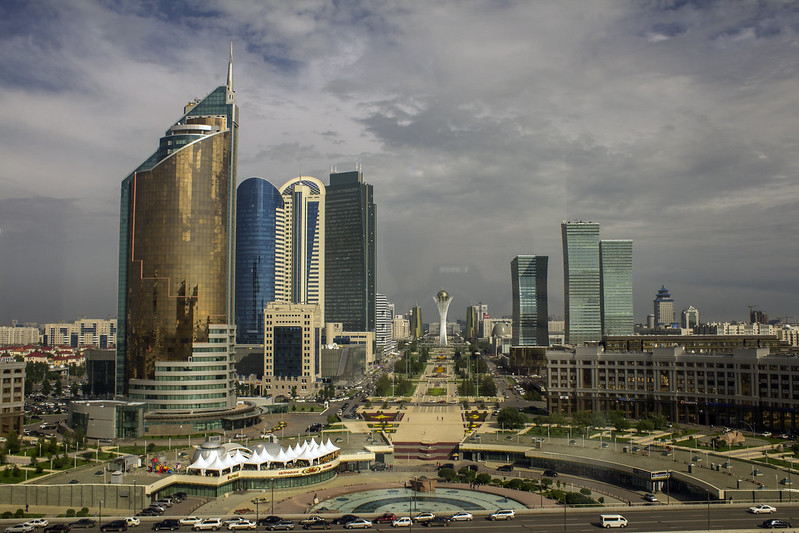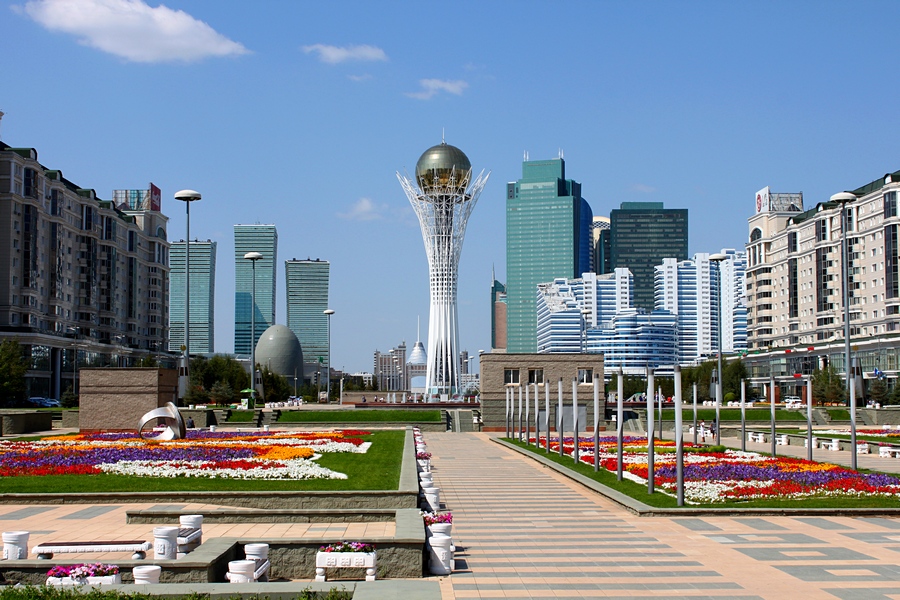Astana, Cities, Construction – And Maybe The Worlds Biggest Sustainability Problem Right Now
This August in 2017 we were invited to the WORLD EXPO in Astana Kasachstan to present the work of the Open Source Circular Economy Days. I met fantastic people there doing great work. But I also got a bit sad when I walked through the city. I discovered one of the worlds biggest sustainability problems – a problem I have never heard or read about: Cities not built to last.

Astana became the new capital of Kasachstan in 1997. Since then the better part of the city was built – from scratch! And especially for the EXPO 2017 a lot of new infrastructure was added just in the last months or weeks: futuristic buildings, public places, shopping malls and so on. Dave discovered that the paint on the walls of the space ship shaped conference center we were presenting in was still wet!
Naturally everything is a bit out of proportion, often empty or unused and lacks a “soul”. The “soul of a city” emerges – as my colleague Sam put it – when many people with many different ideas use and shape a space over time. So no surprise there was no soul – yet. And also not a problem. It will emerge in the coming decades. The lack of soul was not the part that made me depressed.
What made me depressed was the incredible poor quality of construction I saw everywhere – it was how the city was built. A lot of the fresh and new things there were already broken – built broken! I saw a park with benches from stone – not older than a few months – and each bench was already broken. I counted the stones and bricks used for the sidewalks, walls, fountains and so on: 4 out of 5 were damaged (they must have come out of the factory like that already). Things fell of everywhere: I walked by buildings younger than 10 years but you could not go inside using the regular staircase because that staircase was already ruins – this reminded me of pictures of decomposing greek temples that are thousands of years old. But the first IPhone is older than this building!
Why is that? I think one of the problems is probably the huge span of temperature in Astana. Extreme winter cold alters with extreme summer heat and this puts a lot of stress on infrastructure. But the bigger or maybe real problem is probably another: When you put up a huge city like this that quickly with construction methodologies and materials that haven’t been around for centuries in your culture it will be impossible to find enough properly educated and skilled construction workers, craftsmen, factories and planners. I imagine that a lot of the construction is done by untrained people trimmed to work quick.
From a sustainability point of view this is an incredible disaster. Building a city is extremely energy and resource intense! Imagine all the steel, glass and stone mined, processed, transported and installed… And try to imagine the pollution, exhaustion, CO2 emissions and climate effects attached to this.
When everything is built broken you will have to fix or replace it quite soon – using new steel, glass and stone … Sustainability would mean to build things to last.
Today 3,5 billion people on this planet live in cities. Researchers predict that by 2050 it will be 7 billion. This would mean that 50% of the city infrastructure that will be around in 23 years will be built in the coming two decades! The amount CO2 emissions that goes with this equals already the total amount we are allowed to produce by the Paris climate agreement if we want to keep the “2 degree goal”. But we have not feed, clothed and transported the people on the planet then yet and we have not heated their houses or equipped them with technology. All of this would come on top.
So it is already over capacity. And then, when the new cities are built in a quality that makes it necessary to redo them just after a couple of years the problem gets worse – it becomes a real disaster. Let’s build things at least to last and therefore sustainably.
I am not sure if this is really a global issue. I hope not. I have not been to one of the new cities in China for example. Not all parts of the globe have to deal with the same extreme temperature differences as Astana. But the key problem: the lack of qualified planners, factories, craftsmen and construction workers might exist in other places too.
If you were a sustainability activist or sustainable startup pioneer in that parts of the world you would think about taking on this problem as it is certainly one of the real big sustainability problems on earth right now! You could run campaigns, do lobby work and set up schools, seals and certification processes to educate people to demand and install better quality construction. You can do this as an activist or as a company! It should easily be possible to fund this work. High quality goods are understood everywhere.
–
One aspect made me think while I was walking through Astana: What does this communicate? What message does it send to the people that live in this city – that move through it every morning, every afternoon, every evening, every night? The lack of care for things and their future, the lack of foresight is everywhere and therefore “normal”. This might spread and build a “throw away mentality”. And not be fit to foster an atmosphere of mutual care for our planet and its biosphere. And not support and enable people to invent the relationships and strategies needed for a sustainable world.
In this case it is not a matter of hacking infrastructure. It is a matter of hacking politics, planning, construction business and public opinion.
I think you can’t underestimate the importance of this for our globe. The longevity of city infrastructure and what it is able to do for us!
/
(Update: I found one article addressing the problem. But have a look at it … What does it say and how!)

